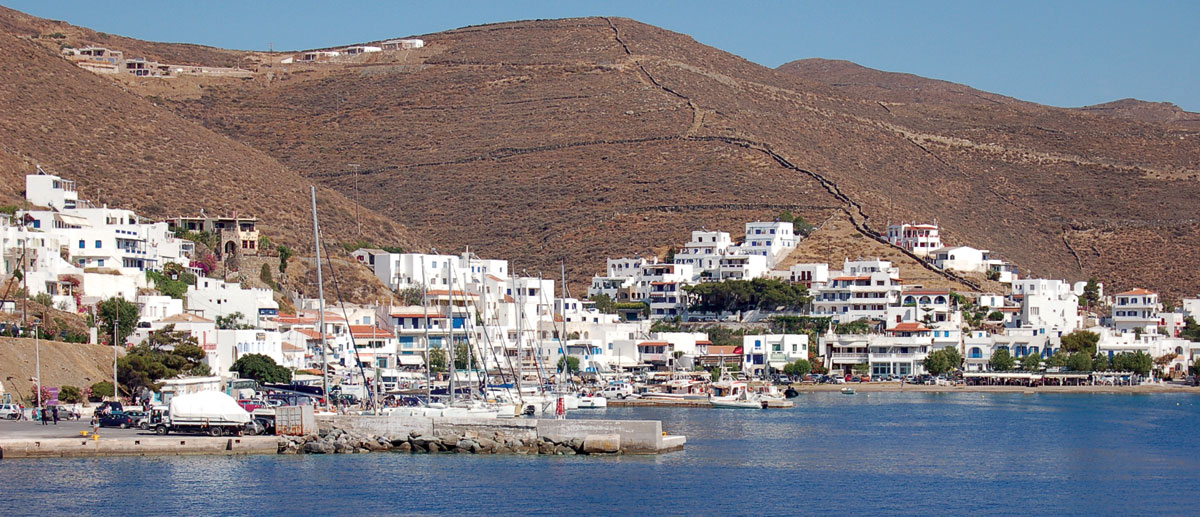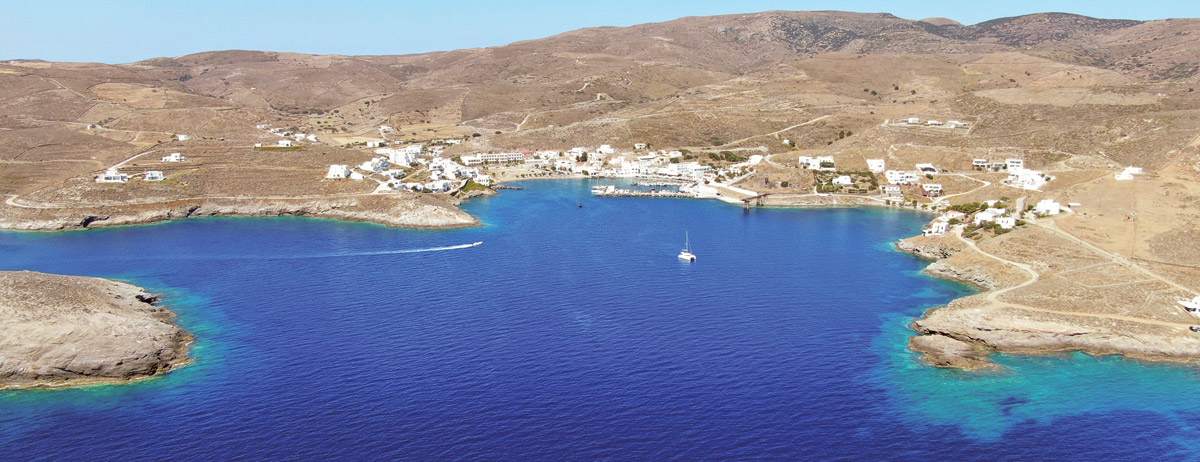
Kýthnos island had different names over the centuries, each one with its own meaning. The name Kýthnos derived from the leader of the Drýopes, Kýthno, who initially conquered the island. In the 12th century AD the island was named Thermía, due to the thermal springs that still exist in the bay of Loutrá. The ancient name Dryopís derived from the fact that it was colonized by Drýopes. During the Frankish rule it was known as Fermína. Last, during antiquity the island was also named Ofioússa or Thiramniá.
Kýthnos was first inhabited between 9500 and 8500 BC., according to findings on the northeastern coasts of the island (four graves with signs of human presence from the Mesolithic Era).
The tribe of Drýopes came from the island of Évvoia and arrived at Kýthnos around the 12th to 11th century BC. Then came the Iones, with Késtora and Kélyfo as their leaders, who improved and reinforced the colony. Excavations on the beach of Episkopí up until Chóra (the capital of the island), brought to light rich findings from the ancient civilization.
In the Classic years, the island was known for its excellent organization and political system. It was actually mentioned in Aristotle’s book “Kýthnian State”, which unfortunately does not exist anymore.
During the Roman rule, Kýthnos was used as an exile for roman political prisoners.
From the 4th century AD up until the fall of the Byzantine Empire to the Franks (13th century AD), the island had the same fate with most of the Cyclades island. As the Byzantine Empire was practically unable to defend them, the pirates plundered for centuries and as a result, their resources and population kept thinning over the centuries.
For approximately 3 centuries, 13th to mid 16th century AD, Kýthnos was on the hands of the Venetians, up until the admiral of the Turks and King of All Pirates of the Mediterranean Barbaróssa (red beard), conquered the island, slaughtered whoever he could and sold the rest he could get his hands on to the slave markets of Asia. For unknown reason, in1600, the Turks killed all the male population of the island. As a result, the years following, the island was depopulated and gradually colonized by settlers from the nearby islands (one century later, the island numbered just over 1000 inhabitants).
Kýthnos was among the first islands to raise the flag of the Hellenic Revolution of 1821.
There was significant contribution to the arts and literature. The painters Timánthis (4th century BC.) and Kydías (1716 – 1786 AD) and the historian Agisídimos (1st century BC.) originated from Kýthnos.
There are several and beautiful churches and monasteries all around the island, for example Panagía Kanála, the monastery of Panagía Níkous, Panagía Stratilátissa and Panagía Flabourianí, with an amazing view to the pelago. The island is also filled with beautiful bays and sandy beaches, all in small distances between them.

Loutrá is just 5 km away from the capital and are inhabited since antiquity, due to the existence of drinking water in the area plus the natural shelter provided by its bay. Since antiquity, Loutrá are known for their thermal springs.
Mérichas is the main harbour of the island, with significant touristic activity during summer. Apart from its own beach, there are other sandy beached close by, so that you can enjoy the grandeur of the Hellenic summer – with a view to the dying sun as well!
Ágios Stéfanos is a small coastal settlement on the eastern side of the island, with only 8 permanent inhabitants. In one of its many coves, you will enjoy a swim in your own, private, beach.


